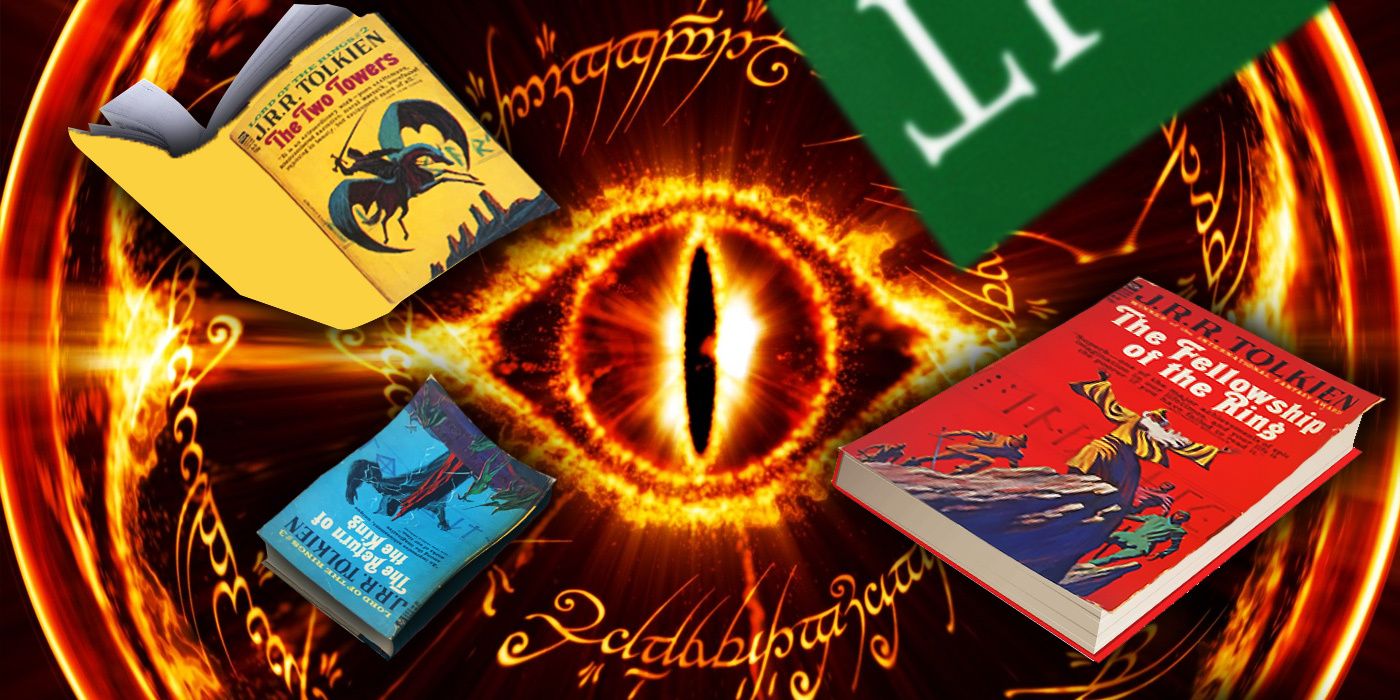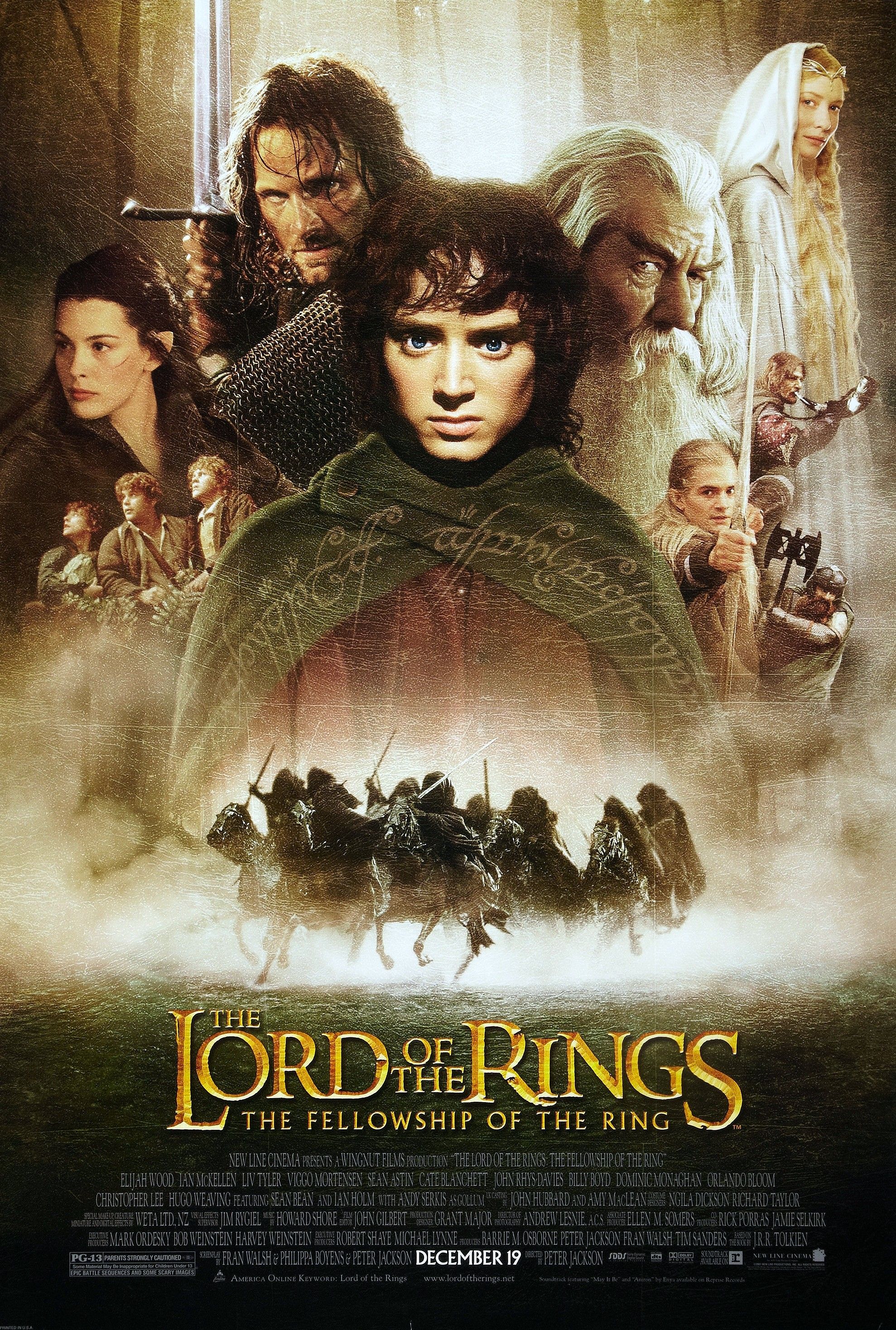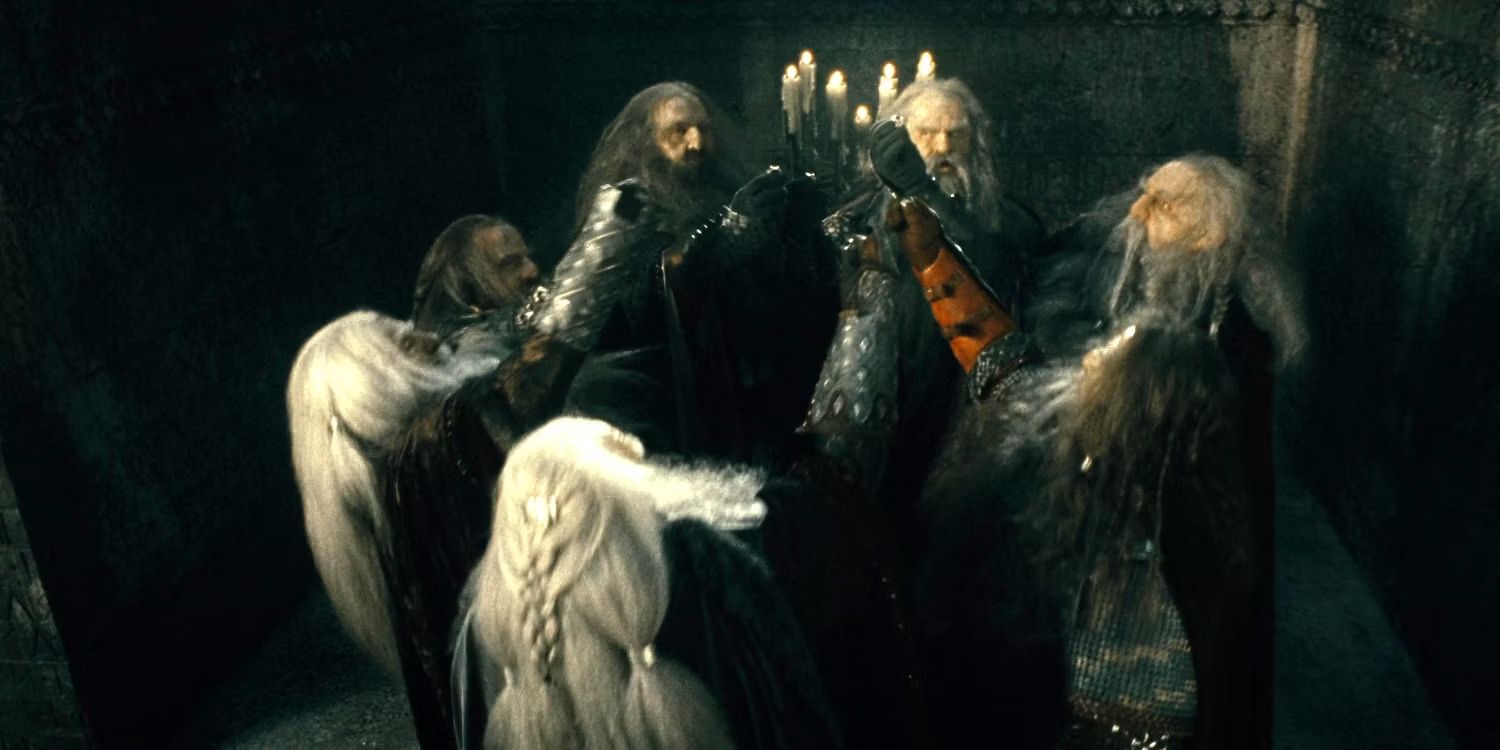The Lord of the Rings is an epic story that follows Frodo (Elijah Wood) and his companions on their quest to defeat Sauron by destroying the One Ring. But, despite its name, there are many other important rings in Middle-earth. Nineteen, to be exact, distributed among the peoples of Middle-earth, with three given to the Elves, seven to the Dwarves, and nine to the leaders of Men. In the opening of The Fellowship of the Ring, Galadriel’s (Cate Blanchett) voice narrates the prologue, introducing the many rings and explaining, “within these rings was bound the strength and will to govern each race.” The One Ring’s power over the others is part of what makes it significant, inspiring the storyline of J. R. R. Tolkien‘s novels and the film trilogy. Still, despite the nineteen rings being central to the opening of the trilogy, they are ignored after that.
The Lord of the Rings focuses on the One Ring rather than the other nineteen because that is the one that must be destroyed in such a specific and challenging way. However, the others are not all gone. By the time the story picks up, the rings have been around for thousands of years, having been forged in the Second Age of Middle-earth while the War of the Ring (as the events of The Lord of the Rings are called) takes place at the end of the Third Age. In that time, the Elven rings have changed hands. The prologue shows Galadriel and two other Elves, whom Tolkien named Gil-galad and Círdan, getting the rings. Galadriel still has hers; though it is not mentioned directly, Gandalf (Ian McKellen) can be seen with another. The books also reveal that Elrond (Hugo Weaving) holds the third. Meanwhile, the nine given to Men created the Ringwraiths, who chased the Hobbits, and Sauron recovered their rings. But, the Dwarven rings have a different history.
What are the Dwarven Rings?
The Seven were given to the seven Dwarf-kings of the different clans: the Longbeards (Durin’s Folk), the Firebeards, the Broadbeams, the Ironfists, the Stiffbeards, the Blacklocks, and the Stonefoots. This spread the rings across Middle-earth, embedding them into each Dwarven stronghold. Though seven different Dwarves received rings, only one is named – Durin III of the Durin’s Folk. Durin III wore the Ring of Thrór, eventually passing the ring down his line. Assumedly, the other rings were passed down to other leaders as well since the Dwarves lack the long lives of Elves. But these rings were more than family heirlooms.
While the Seven did not turn the Dwarves who wore them into Ringwraiths, they did have an effect, multiplying their greed and wrath. The Dwarves used their rings to gain wealth, and supposedly, the rings were behind the Seven Hoards of legendary Dwarven treasures. But even as they grew rich, the Dwarves’ actions brought evils. Perhaps the primary example is the Dwarves of Khazad-dûm, who, in their greed, dug too deep, waking a balrog in the Mines of Moria. The chaos certainly benefits Sauron, though the Dwarves did not do so intentionally.

Related
We Have an Error To Thank for One of Lord of the Rings’ Most Powerful Elves
Even J.R.R. Tolkien makes mistakes.
What Happened to the Seven Rings Before The Lord of the Rings?
Despite their roles in building the Dwarves’ treasures, they have fallen out of the narrative by the beginning of The Lord of the Rings. At this point in Middle-earth’s history, neither the original owners nor their descendants had the rings. In fact, there were no longer seven of them. During the thousands of years between their creation and Frodo receiving the One Ring, four of the Seven were destroyed, leaving only three present in the world. Unlike the One Ring, the lesser rings can be destroyed much more simply. The rings got caught in the Dwarves’ ongoing conflict with the dragons of Middle-earth, who also hoarded treasure. Like Smaug (Benedict Cumberbatch) captures the Dwarves’ home, leading to the events of The Hobbit, other dwarves encounter the creatures, and four of the rings were either swallowed by the dragons or destroyed in their fire.
The other three are no longer in the possession of the Dwarves because, upon his return, Sauron recaptured them. Though Tolkien mentions the fate of these rings in Appendix A, there isn’t much detail provided, though he does reveal the last known wearer of one of the Seven was Thráin II, who fans of The Hobbit may know better as the father of Thorin Oakensheild (Richard Armitage). During his doomed quest to regain his home, Thráin II was captured by Sauron’s spies and imprisoned in the dungeons of Dol Guldur, where Sauron took the final Dwarven ring back just a few hundred years before the War of the Ring. The fate of the Dwarves’ rings is unique and varied. Though there is only so much information about them, these rings show just how much has changed between their creation and the trilogy’s story.

A meek Hobbit from the Shire and eight companions set out on a journey to destroy the powerful One Ring and save Middle-earth from the Dark Lord Sauron.
- Release Date
- December 19, 2001
- Runtime
- 178 minutes
Lord of the Rings: The Fellowship of the Ring is streaming on Max in the U.S.





